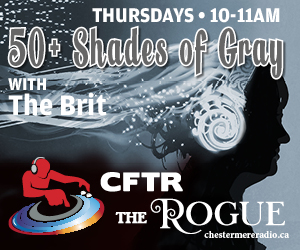Every day of this accursed pandemic gives me a new reason to drown my sorrows in wine! Alberta has the dubious honour of being the national hotspot, surpassing 1000 daily infections in mid-November, and on track for double that by the end of November. My new plan is to go into the wine cellar and not come out until this is all over!
Referencing the page-a-day wine calendar helpfully posted on the door to the wine cellar, I decided to crack open a bottle of Beaujolais to observe and celebrate Beaujolais Nouveau Day, which occurs every year on the 3rd Thursday of November.
For those not in the know, Beaujolais refers to a wine-growing region in France, not to a particular type of grape. This is similar to how Bordeaux wines are from the Bordeaux region, but may be made up of several different grape varietals.
While there are several different grape varietals planted in the Beaujolais region, 98% of them are Gamay Noir, so you can be pretty confident about exactly what kind of grapes are in a bottle of Beaujolais.
Gamay Noir is now considered a noble grape in its own right, but it was originally the product of a cross between Pinot Noir and an ancient white variety called Gouais. The hybrid was developed because it ripened two weeks earlier than Pinot Noir, and produces a much higher yield of grapes.
Unfortunately, higher yields at harvest time generally produce inferior grapes, so the Gamay Noir grape has a reputation for being a simple-tasting wine. However, the French will often enjoy a simple wine at breakfast or lunch, preferring to leave the more complex wines for the evening meal.
The Gamay Noir grape has flourished in the Beaujolais region of France, which is located directly south of Burgundy, where the wine producers employ a unique method of vinification process known as carbonic maceration, which gives Beaujolais its light and fruity flavor.
Instead of pressing the juice from the grapes before fermentation, the carbonic maceration process pumps carbon dioxide into a sealed vessel filled with whole grapes.
The CO2 gas permeates the grape skins, and fermentation occurs while the juice is still inside the grape. This produces a wine that is much fruitier, with far less tannin than other wines.
Since there are no appreciable level of tannins in the wine, it does not tend to keep well for long periods. In fact, Beaujolais is a wine that explicitly designed to be consumed young. If you don’t drink a Beaujolais in the same year it was produced, you’re not drinking it quickly enough.
While the producers of the Beaujolais region do crank out many complex and interesting red wines, the perils of mass marketing have doomed that region to be associated with one particular style, namely Beaujolais Nouveau.
Beaujolais Nouveau is a light and fruity wine – it’s even light by Beaujolais standards, which is pretty light to begin with.
This wine is always released on the third Thursday of November, regardless of whether or not it is ready. This clockwork release cycle was the brainchild of a local wine kingpin who started a competition in 1985 to see who could rush their wines to markets the quickest after harvest.
This generated lots of buzz in the wine world, so lots of people were snapping up the Beaujolais Nouveau like it was going out of style.
Unfortunately, with too many producers jumping on the bandwagon with inferior grapes, this did cause Beaujolais Nouveau to quite spectacularly go out of style in 2001.
Consumers revolted against the low-quality swill that had flooded the market, and most of the 2001 harvest had to be destroyed or converted to industrial alcohol.
Unfortunately, the annual November hype about Beaujolais Nouveau has convinced the less sophisticated North American wine drinker that Beaujolais is a seasonal drink that you have from Thanksgiving to Christmas.
This causes no end of angst to the wine producers of high-quality and complex wines, who have been unable to convince the unwashed masses that Beaujolais and Beaujolais Nouveau are not the same thing.
I always skip the gimmicky Beaujolais Nouveau wines, staying with the tried and true Gamay Noir varietals either from their ancestral home in France, or from one of the many
Okanagan wineries that produce Gamay Noir wines in the same style of the Beaujolais wine regions of France, so look for one at your friendly neighbourhood booze merchant!





